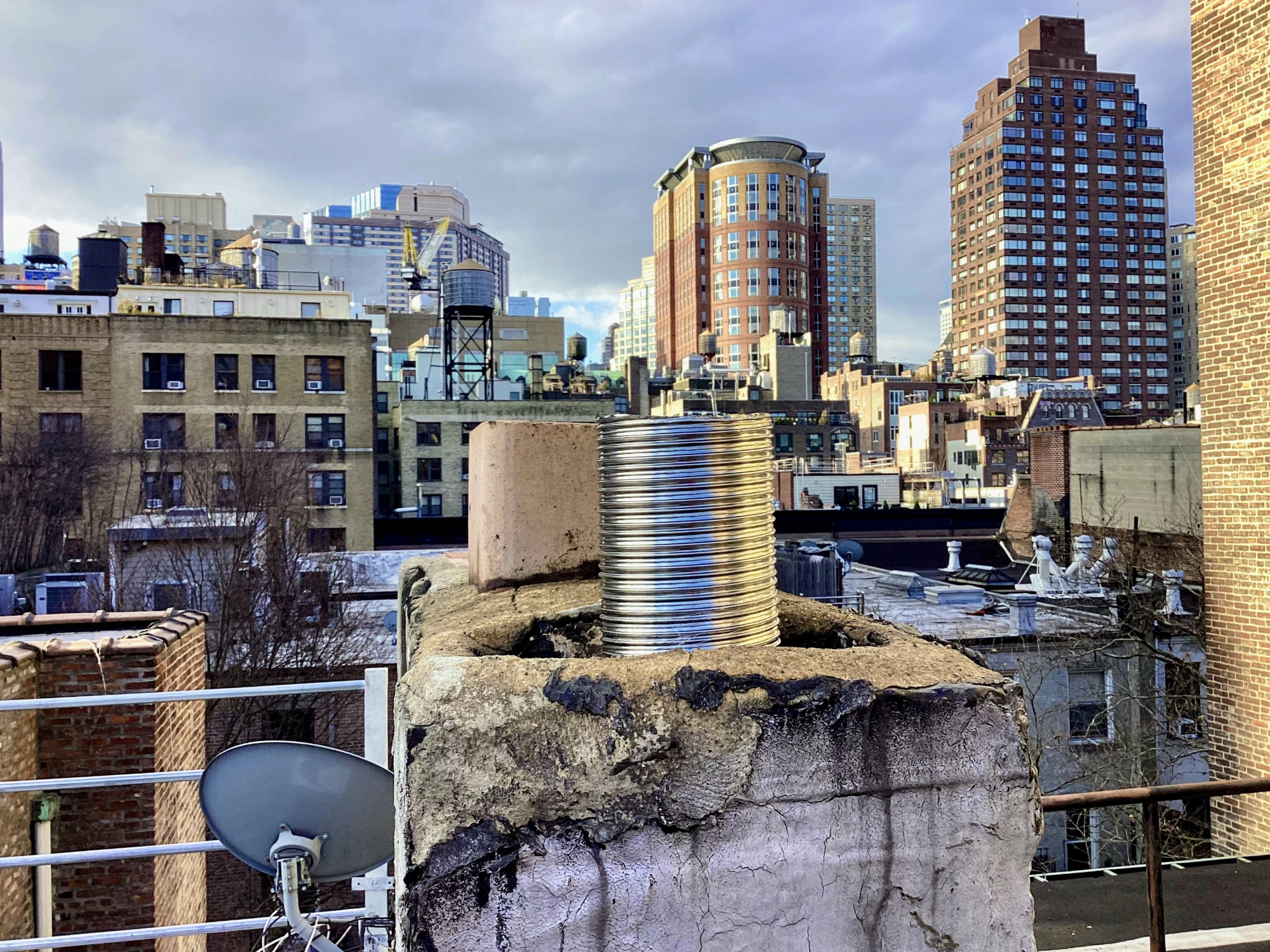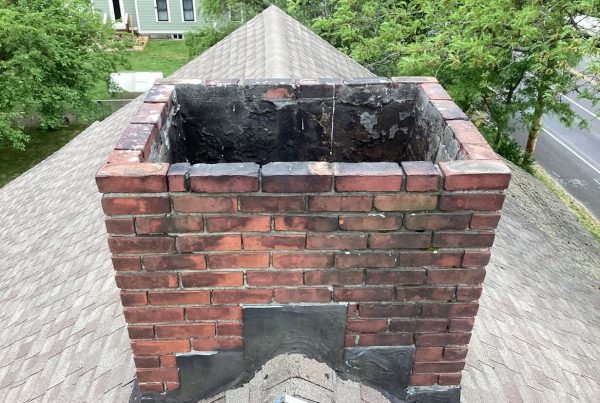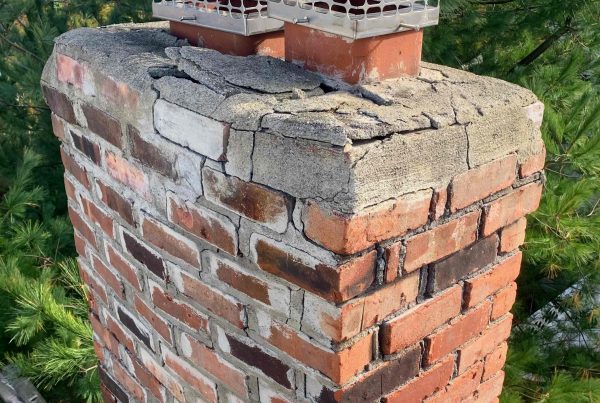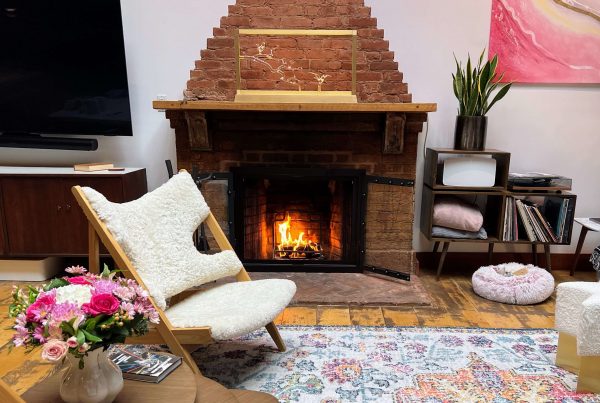Chimney Liner
A chimney liner or sleeve is a protective layer inside your chimney. It shields against high temperatures and corrosive byproducts produced during the combustion of wood, oil, or gas in your fireplace or heating system, preventing heat damage to chimney walls and the seepage of harmful gases into your living space.
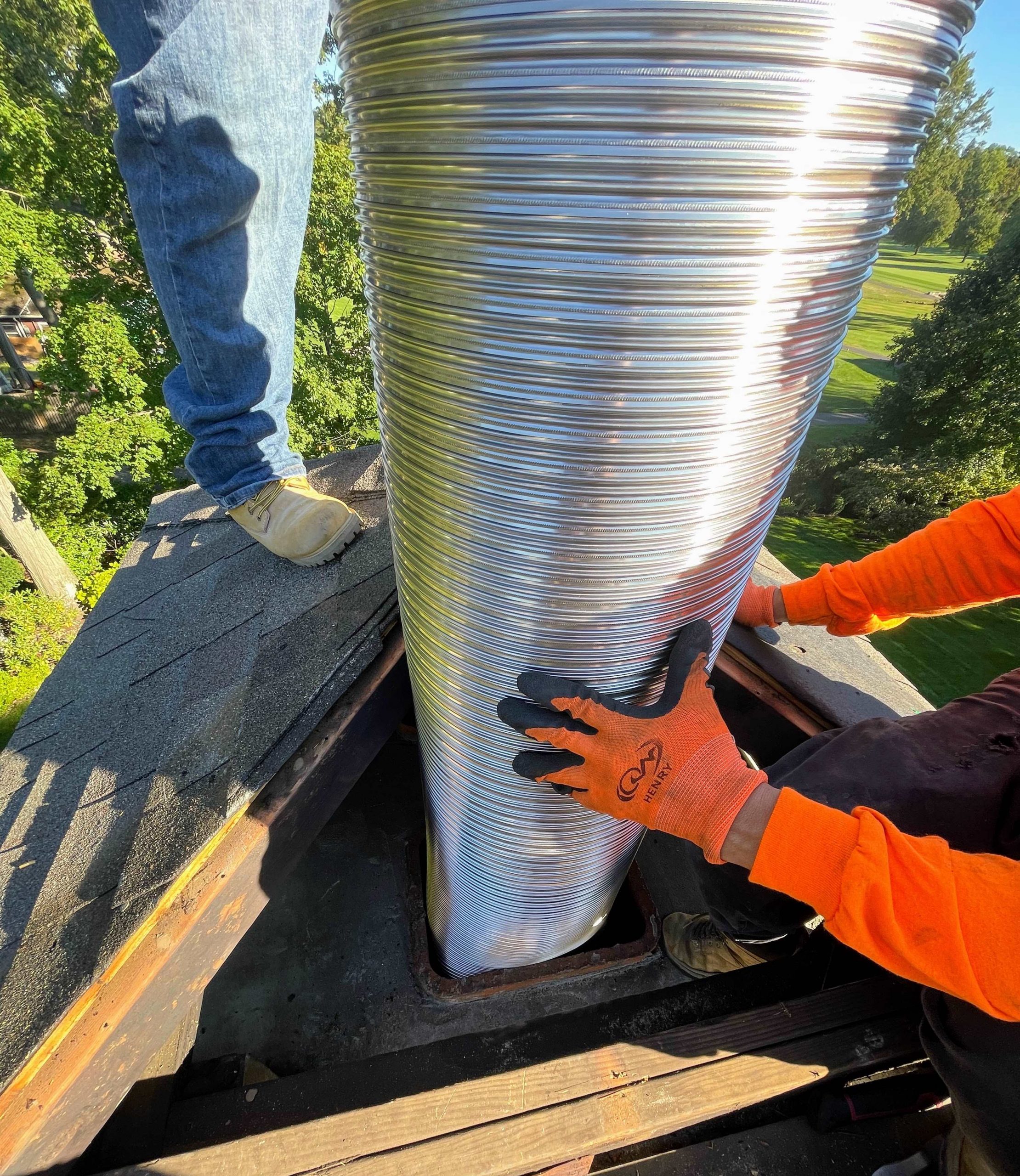
Types of Chimney Liners
Stainless Steel
- Engineered for durability and longevity
- Designed to withstand the harshest conditions
- Resistant to corrosion
- Helps improve draft and efficiency
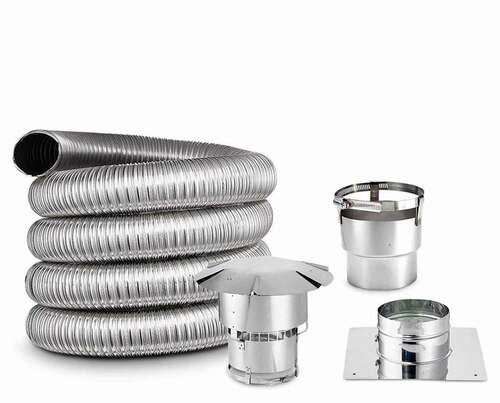
Stainless Steel Liner
Clay
- Natural material, prone to deterioration and crumbling, leading to flue blockages
- Limited lifespan and durability
- Cracks can trap gases, contributing to chimney erosion
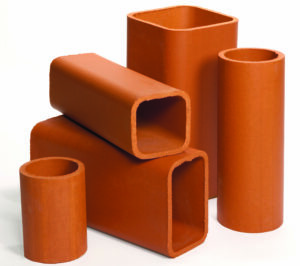
Clay Liner
Did you know
a chimney liner is essential
to your heating system?
In fact, local building codes require a chimney liner regardless of the type of heating system you have.
Should I Replace My Chimney Liner?
Here are some common signs that may indicate it’s time for a repair
Inspect the chimney liner for any visible cracks, holes, or other signs of damage. If you notice any, it’s crucial to address them promptly, as they can compromise the efficiency and safety of your chimney.
The liner may deteriorate over time due to exposure to high temperatures and corrosive substances. If you see any signs of wear and tear, such as flaking or crumbling, it signals that replacement is necessary.
Excessive creosote buildup on the chimney liner poses a fire hazard. Regular chimney cleanings helps prevent this, but if creosote buildup is severe, it may be a sign of a problem with the liner, and replacement may be needed.
If you experience issues with smoke backing up into your home or notice a decrease in the efficiency of your heating system, it could be related to a damaged or inadequate chimney liner. As the clay liner crumbles, it creates irregular surfaces and gaps that disrupt the upward flow of gases.
The lifespan of a chimney liner can vary depending on factors such as the material used, the type of fuel burned, and maintenance practices. However, if your chimney liner is made of clay and is several decades old, it may be nearing the end of its effective lifespan.
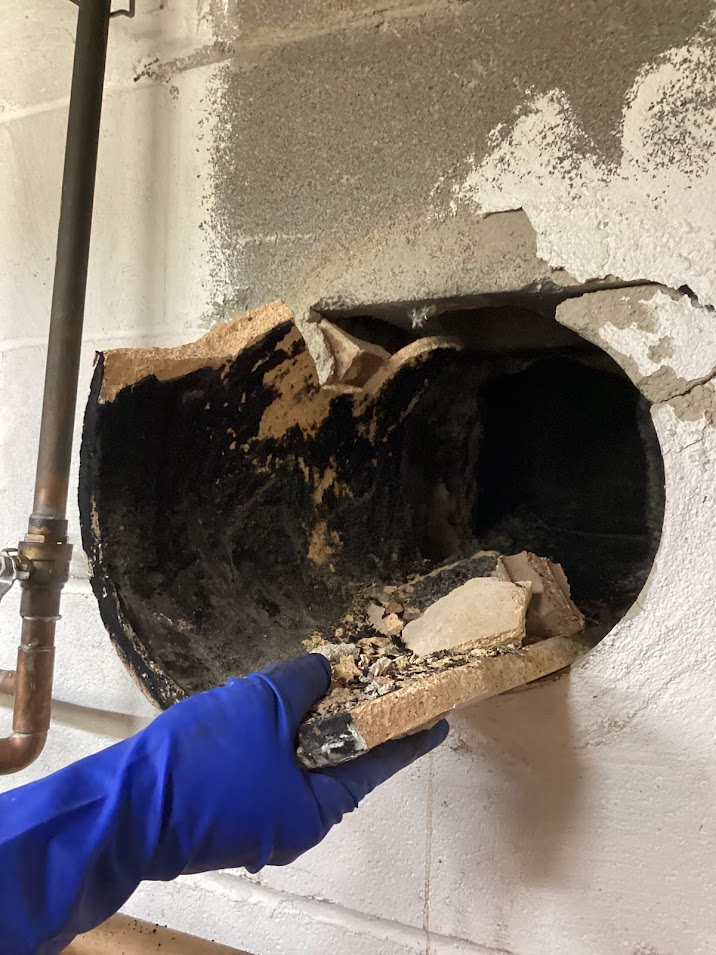
Broken clay chimney liner
Gas And Oil Burners
Fallen clay debris can block your flue, restricting the airflow necessary for combustion. If your gas or oil burner continues to operate with compromised ventilation, it can cause the system’s components to malfunction and may lead to overheating. The most significant concern is potentially releasing dangerous gases, including carbon monoxide, into your home.




